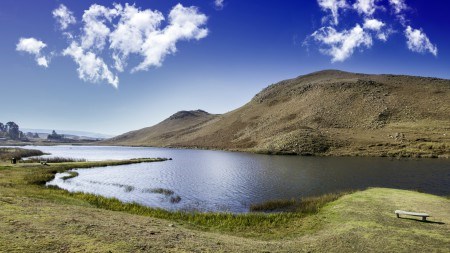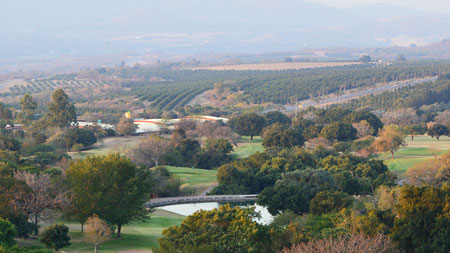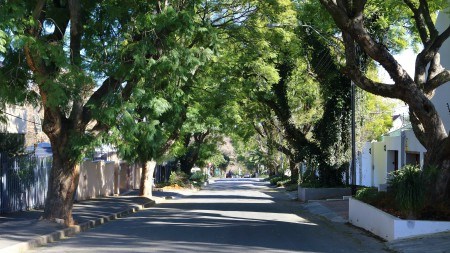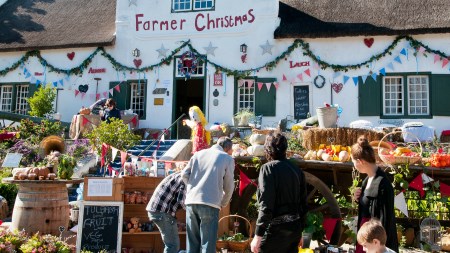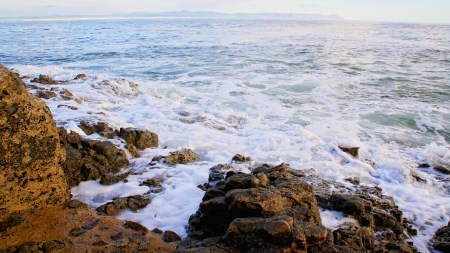Dullstroom might not be a big town, but it’s a town with a big heart and lots of soul.
Dullstroom is a small town nestled in the Steenkampsberg Plateau in Mpumalanga’s Highlands Meander. Indicated on the map as a tiny dot halfway between Pretoria and the Kruger National Park, Dullstroom might not be a big town, but it’s a town with a big heart and lots of soul.
Established in 1883, Dullstroom is rich in history and character. During the Second Anglo Boer War (1899 – 1902) the entire village was destroyed and after the war, it was rebuilt by some of its earlier inhabitants who returned to this beautiful landscape of rolling hills and grasslands, crystal-clear streams and lakes, blue skies and greenery.
In 1912, one man’s fleeting thought while he was fishing in the town river unexpectedly changed Dullstroom’s future. J Gurr, the then postmaster of the nearby town of Lydenburg (53km away), caught a fish resembling the trout species. The idea was born and four years later the first fingerlings were introduced to the local waters.
Today, Dullstroom, now also called Emnotweni, is recognised as the top fly-fishing destination in South Africa. The Highlands Meander’s Trout Triangle can be found between the towns of Dullstroom, Machadodorp (60km) and Belfast (33km). With Gauteng’s big cities, Pretoria and Johannesburg, only about a two-and-a-half-hour drive away and less than two hours away from Nelspruit, Dullstroom is a popular holiday and weekend home for Gauteng and Mpumalanga’s fly-fishing enthusiasts and nature lovers, with some of them eventually moving to Dullstroom permanently.
Even though the town’s flourishing tourism industry is to a great extent built upon the exotic fish, trout and picturesque countryside vistas are not the only attractions. Dullstroom draws many non-fishing visitors.
On the weekends, the main street is bustling with people enjoying the local cuisine and ambience of the many restaurants and pubs. In winter, mist and cold are part and parcel of the package, but nothing can quite compare to the specific Dullstroom experience: crackling log fires and sips of the finest whisky in Wild about Whisky – a pub with the largest collection of whiskies in the Southern Hemisphere.
Even though the town has many art, craft, decor and curio shops, care is taken to keep it local and authentic. The small countryside village look and feel has been preserved. New developments are undeniably taking place, with a number of leisure estates, including a golf estate, having been developed in recent years, but they’re located well outside the village. Developers are keen to preserve the secluded atmosphere that is a key attraction for potential permanent residents.
“To me, Dullstroom is like South Africa’s own Scotland . . . mystical, misty, dreamy, rocky views, relaxing, recharging. Dullstroom encompasses lots of wood fires, special wine or beer, earthy food, long discussions with special friends surrounded by the majestic scenery!” -Karen Meyer, second home resident.
Nature near Dullstroom:
Dullstroom Nature Reserve: for trout fishing, hikes, a wide range of indigenous flowering plants and a small wetland area
Steenkampsberg Hiking Trail: a two-day hiking trail in the grasslands of Steenkampsberg, which is home to a large variety of mammals
Verloren Valei Nature Reserve: renowned for its rich birdlife
Dullstroom Bird of Prey and Rehabilitation Centre: for flying demonstrations and opportunities to take pictures with the birds
Ama Poot Poot Hiking Trail: a two-day hiking trail especially enjoyed by fly-fishing fans
Things to do in Dullstroom:
Explore the area on a quad bike, on horseback or mountain bike.
Play golf, go clay pigeon shooting or try trout fishing.
Enjoy scenic drives via Sabie, Graskop and/or Hazyview.
Browse through the many novelty shops and taste some whisky, beer and cheese.
Enjoy a delicious trout dish.
Little known facts about Dullstroom:
Dullstroom is home to the country’s highest railway station (2,076m above sea level).
It’s the only region in the country where the endangered blue crane, crowned crane and wattled crane can be found.
It’s the only place in the country where elm and beech trees grow.


This article originally appeared in Neighbourhood, Sunday Times.
